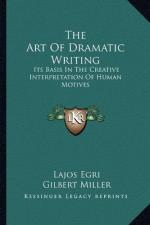|
This section contains 295 words (approx. 1 page at 400 words per page) |

|
Book II: Character, Chapters 10 - 11 Summary and Analysis
Chapter 10: Orchestration
When a writer has pivotal characters and antagonists, he must make certain they are indeed very different from one another. They cannot share the same attitude toward things, and need to have contrasting moods. If they are too similar in ways such as this, there is no conflict, and therefore no play, of course. The author takes a look at when a play's story moves from something like love to hate, and how, in order to have this, things need to be well-defined. To have well-defined characters, the writer should know what personality categories they fall under, and when he finds two differing personalities, the conflict can then present itself. The author certainly does not want the writer to forget about growth, which has to be maintained so the end of...
(read more from the Book II: Character, Chapters 10 - 11 Summary)
|
This section contains 295 words (approx. 1 page at 400 words per page) |

|




